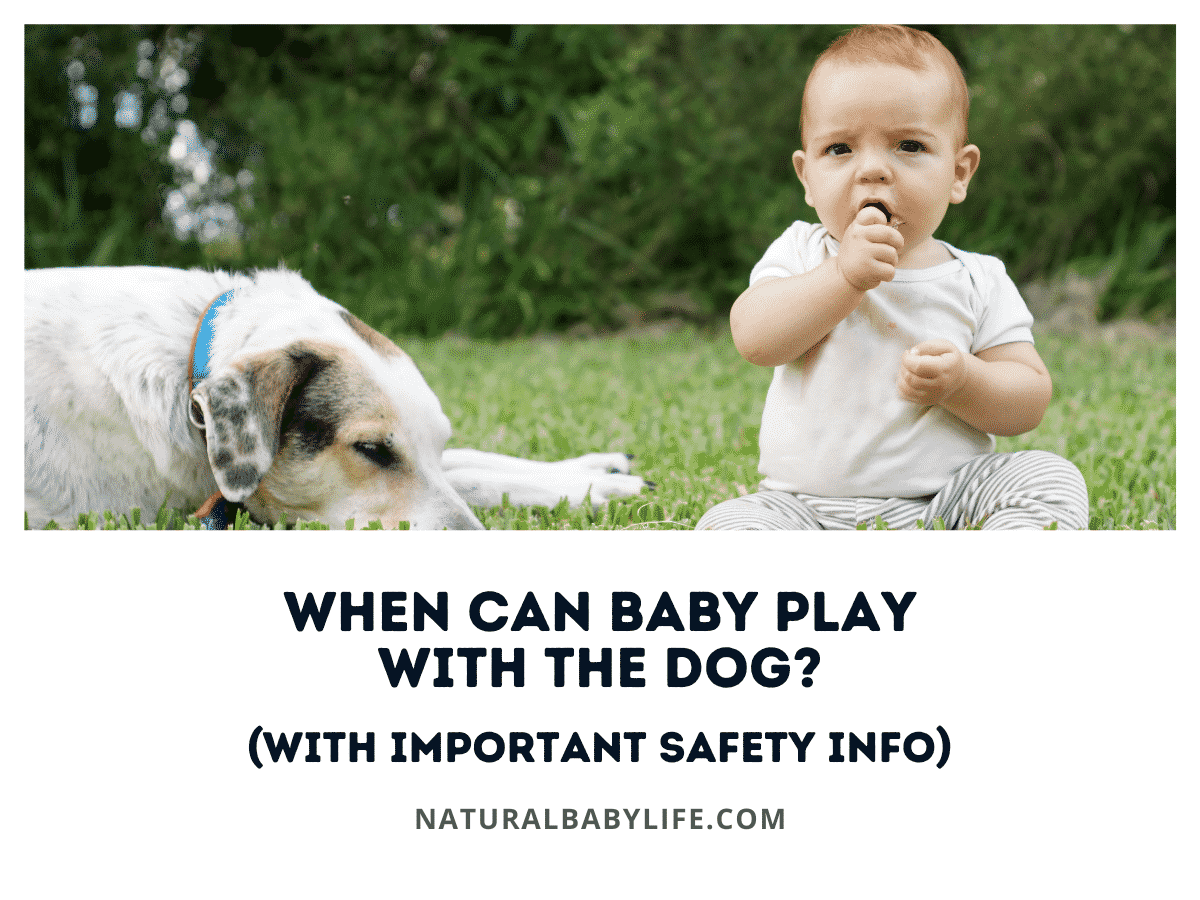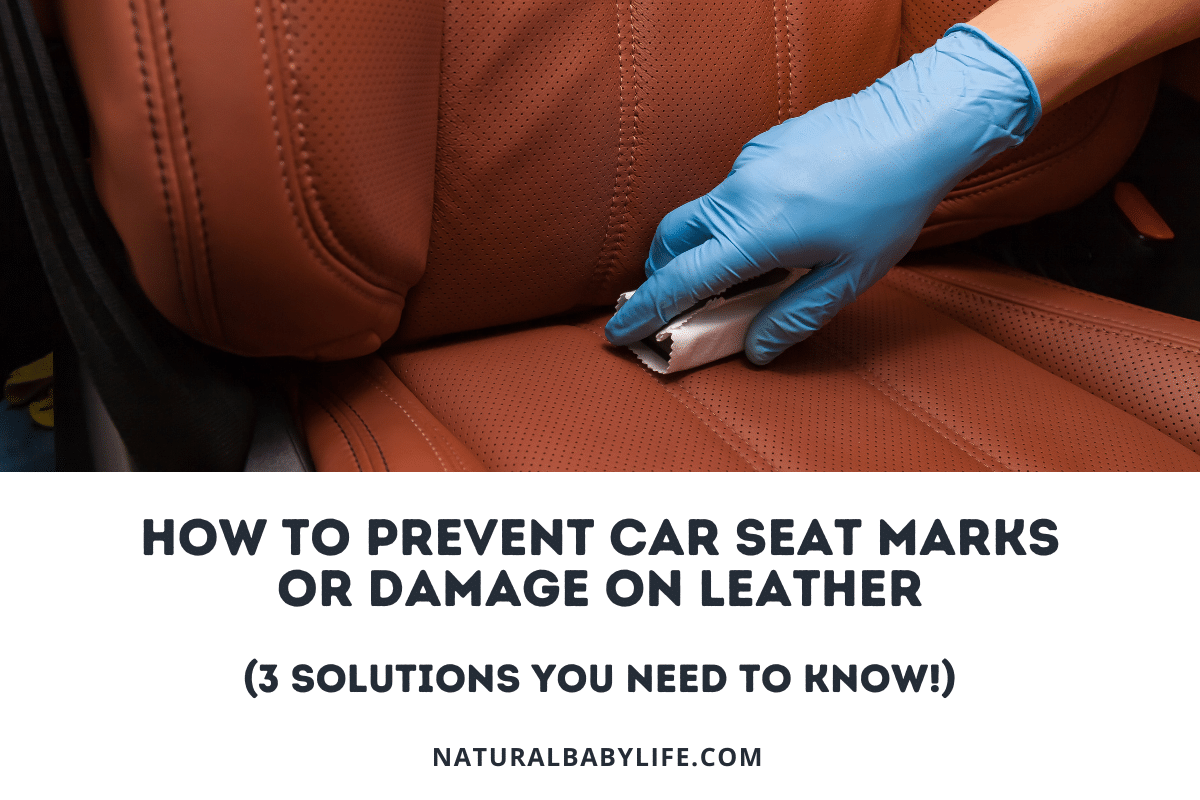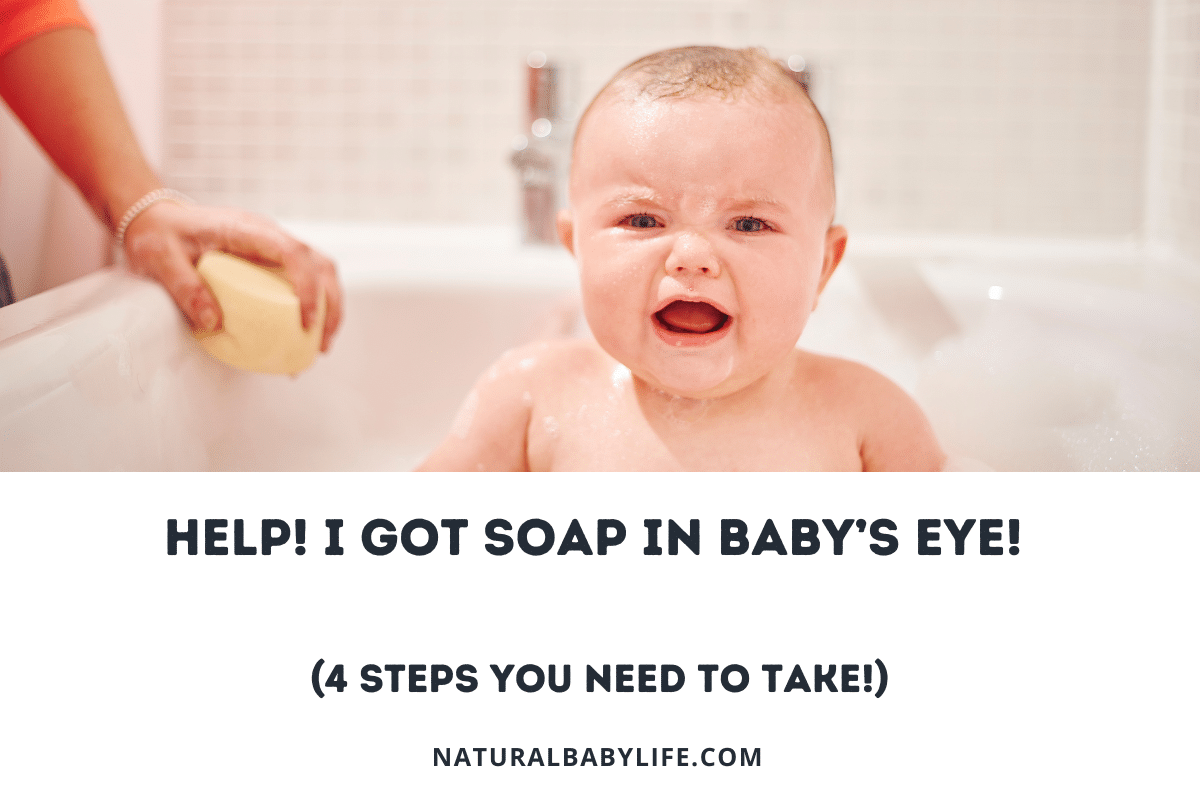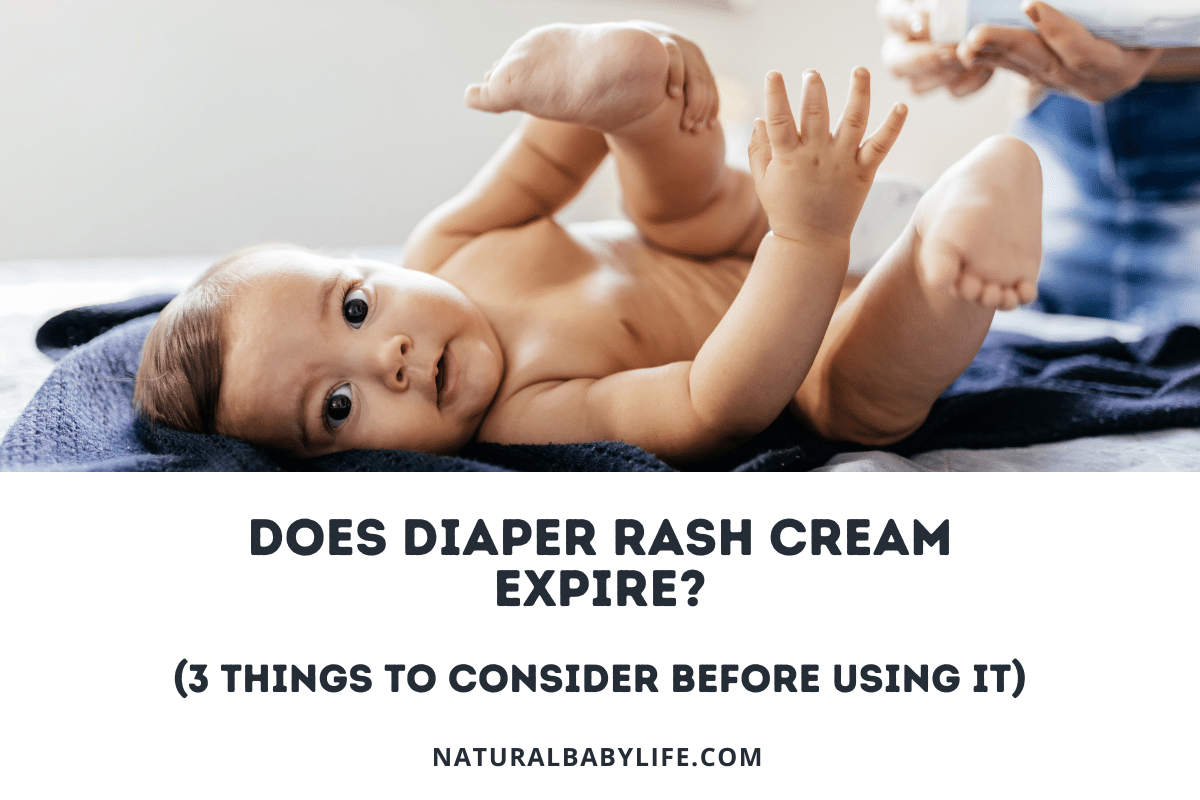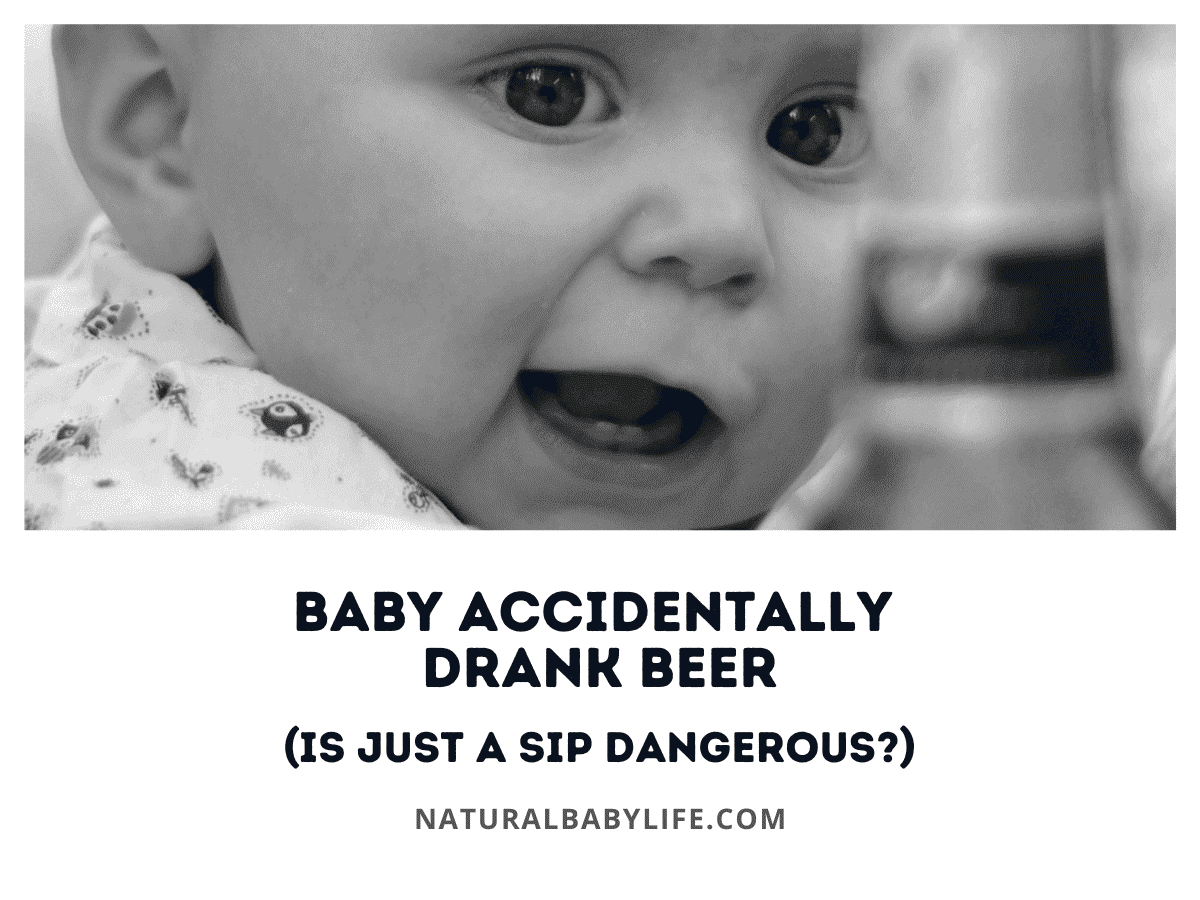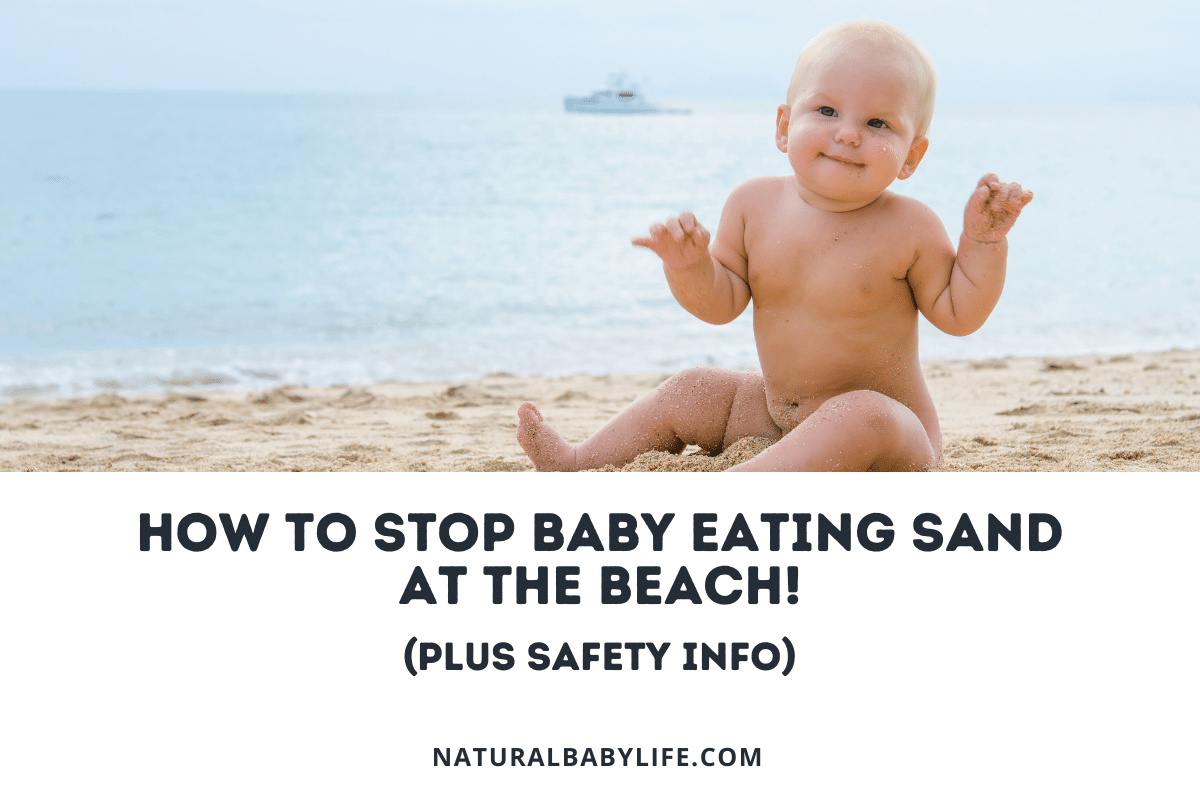A family dog can help your little one gain social skills, learn about responsibilities, and regulate their emotions. There is nothing purer than the bond between a child and their dog, but when is it safe for a baby to play with the dog?
A dog can be the perfect playmate, but it can also pose a threat. The key to pet safety is to always supervise interactions between your dog and baby. It is important to teach both the dog and baby how to gently interact with one another. Some dogs might need more time than others, and dogs prone to aggression should stay separated from children.
Keep reading to learn more about how to create safe interactions between your baby and dog.
Table of Contents
Can babies play with dogs?
According to Psychology Today, 81% of pet owners view their pets as members of their family. Many people even admit to treating their dogs like children. Though there is no harm in loving your dog like a family member, it is important to recognize that even the most trusted, well-behaved dogs can be a danger to babies.
From 2011 to 2017, dog bite fatality victims aged 0 to 9 years old made up 44 percent of total victims. This percentage has been steadily dropping since the 1980s when children made up 70 percent of the total dog bite fatalities. This reduction in child fatalities may be due to increased education and awareness surrounding pet safety.
Being aware of the potential dangers of baby and dog interactions is essential for preventing bites and other injuries. To help reduce risks and promote safe interactions between your dog and baby:
- Always separate your dog and baby when they cannot be closely supervised, during periods of high energy play, when there is food present, and when the dog is sleeping.
- Teach your baby to be gentle when interacting with your dog.
- Maintain a dog-free area for your baby and a baby-free area for your dog.
- Train your dogs to obey basic commands.
- Teach your child not to run past or try to outrun your dog.
- Insist that your friends and family supervise their dogs when your child is present.
- Use positive reinforcement and rewards when your child and dog are behaving the way you want.
Some parents envision getting their baby a puppy to have as a companion to grow with; however, there are many reasons why you may want to reconsider getting a puppy while your baby is young:
- Puppies require a lot of time and attention.
- Puppies may be easily frightened of and hurt by young children.
- Puppies are more likely to engage in “rough play,” and they tend to have sharper claws and teeth.
- Adult dogs require less time and attention once they adjust to the new family dynamic.
- In the case of pet adoption, many adult dogs have been given behavior assessments or have a noted history of their tolerance and interactions with children.
Are dogs gentle with babies?
Having a family dog can be incredibly beneficial for your little one; however, it is important to always closely supervise interactions between your dog and baby.
A dog’s temperament varies based on factors such as breed and upbringing. Dogs prone to disobedience and aggression should be kept separated from babies.
Even with well-behaved dogs, it is important to not be heedless of the potential risks. Dogs that are gentle with babies can still pose a threat if they are caught off guard or frightened. It is not uncommon for dogs to have feelings of jealousy when around a baby, especially in the beginning.
Is it safe for newborns to be around dogs?
It is safe for newborns to be around non-aggressive dogs; however, it is essential that precautions are taken to prevent dangerous interactions.
When your baby is a newborn, they are at their most vulnerable, and your dog is likely still adjusting to the new family dynamic. They are learning to live with new sounds, new smells, and less attention. This can cause your dog to be on edge and act out of character.
Follow these tips to start on a good foot when introducing your dog to your newborn:
- Play audio of crying babies before your baby is born to help familiarize your dog with the sound.
- Bring your dog a muslin, blanket, or hat that has your baby’s scent before bringing your baby home from the hospital.
- When coming home from the hospital, greet your dog individually before introducing them to the baby.
- Keep the initial interaction at a distance. Do not let your dog directly smell or lick the newborn.
Do dogs get jealous of newborns?
Having a brand new baby in the home can be a massive change for your dog. The newborn stage can be an especially difficult period of adjustment. Between the disruption in their routine and lack of attention, dogs can harbor feelings of jealousy toward the new member of the family.
To keep your dog from becoming jealous or forming negative associations with your new baby, try the following:
- Use positive reinforcement when your dog is safely interacting with the baby or exhibiting desirable behavior. Avoid shouting or using negative discipline when the dog is around the baby.
- Carve out time to spend time with your dog. You can even involve them in activities with the baby, such as going on walks.
- When you are spending large periods of time tending to the baby (e.g. nursing), offer your dog a treat and praise whenever possible to help reassure them that they have not been forgotten.
Is it safe to let a dog lick a baby?
Though your little one may love your dog’s “kisses,” a dog’s mouth can be a breeding ground for harmful germs. As your little one’s immune system is still developing, it is important to be extra vigilant in preventing potential illness.
Dogs can carry germs that can cause zoonotic diseases, which are diseases that can be passed from animals to humans. According to the CDC, these diseases range from minor skin infections to serious illnesses; some of which can be transmitted by contact with saliva alone.
Campylobacter infection is a zoonotic disease that is a common cause of bacterial enteritis in humans. It is important to note that campylobacter transmission can occur from both sick and healthy dogs. Dogs are frequently infected after coming into contact with contaminated feces, food, or water. Symptoms of campylobacter infection include:
- Nausea
- Vomiting
- Diarrhea
- Fever
- Abdominal pain
In addition to the potential for disease transmission, frequently licking people can be a red flag in some dogs. According to DailyPuppy, dogs with dominance issues sometimes lick to assert dominance over their owners. Dogs that exhibit this behavior as a show of dominance also exhibit a lack of respect for their owners and tend to act aggressively. Extreme caution should be taken to keep aggressive dogs and children separated.
For more information on what to do if your dog licks your baby and prevention, check out my article A Dog Licked My Baby [Head, Face, Eye, Hand] Is It Cute or Dangerous?
Is dog fur bad for babies?
The primary concern with dog fur is its potential to contribute to allergies or asthma. Allergies to household pets are common, especially if you have a family history of allergies.
Though dog fur can aggravate allergies, allergic reactions are more commonly caused by pet dander, saliva, and urine.
The most common symptoms of pet allergies are:
- Sneezing
- Runny nose
- Red, itchy, or watery eyes
- Nasal congestion
- Postnasal drip
According to the Mayo Clinic, children with pet allergies can still safely and comfortably live with pets. If you find that your little one is allergic to your dog, try the following tips:
- Encourage hand washing after petting.
- Maintain one dog-free room in your home. (Your child’s bedroom is a good option.)
- Talk to your doctor about using antihistamines and nasal corticosteroids to keep symptoms at bay.
- In some cases, immunotherapy, such as allergy shots, may be used to desensitize your child’s immune system.
In addition to the companionship that dogs provide, a study published in the Microbiome Journal found that infants exposed to pet fur and dander in their first months of life may have a reduced risk of obesity and allergies due to its influence on their gut microbiome.
For more information about how pet hair can affect your little one, check out my article Find Dog or Cat Hair in Your Baby’s Poop? (What To Do If Swallowed!).
How to teach a dog to be gentle with babies
Teaching your dog to be gentle with babies should start long before you bring your baby home. In fact, the earlier you begin training your dog to play safely around kids, the better.
To help prepare your dog for your new bundle of joy:
- Socialize your dog. When socializing a puppy, the critical development period is between 8 and 16 weeks. Exposing your puppy to a variety of people and situations during this time will help them tolerate new people and situations later on. Try introducing your dog to a variety of well-behaved children before your baby arrives.
- Start obedience classes. Teaching your dog to respond to basic commands is an excellent step in teaching them how to behave around children. Some of the behaviors you want to attempt to curb include “kissing” and jumping on family members and guests.
- Practice handling exercises. These exercises may include offering praise and rewards while you hug them, gently tug on their tail, or touch their ears. This will help them tolerate similar behavior from older babies and toddlers when the time comes.
- Stop your dog from jumping. Though dogs tend to jump out of excitement, not aggression, it can still be dangerous around a baby. Solving the jumping behavior before your baby is born can help reduce the risk of injury.
- Introduce your dog to your baby’s toys. Let your dog sniff around the nursery. Let them check out the new baby toys and practice telling them to “leave it”. Work on differentiating between dog toys and baby toys by keeping these toys separate. Test out all “noisy” toys before the baby arrives, so they become accustomed to these new sounds.
- Act like a kid. Familiarize your dog with behaviors typically associated with children. These may include running or moving erratically and yelling in a high-pitched voice.
- Crate train your dog. Establishing a comfortable place that is just for them will allow them some peaceful alone time, which can be especially needed with a fussy newborn.
- Do not force them to interact with or accept children. Avoid putting your dog in situations where they are scared or uncomfortable; this may lead to aggressive behavior. Let your dog take as much time as they need to adjust to the new baby.
- Use positive reinforcement. Give your dog lots of attention, praise, and rewards when they are behaving well around the baby.
- Teach your children how to behave around your dog. Once your little one is old enough to crawl and grab, it is important to teach them boundaries to help maintain your dog’s safety and sense of security. This includes:
- Petting the dog gently
- Not going into their crate or safe space
- Not approaching the dog while they are eating or sleeping
- Not forcing interactions with the dog
What if dog behavior changes after bringing baby home
Bringing your new baby home is a big adjustment for everyone in the household – including your dog.
While your pet is adjusting to the new baby they may exhibit behaviors such as:
- Hiding
- Loss of appetite
- Peeing in unusual places
As they adjust to their new normal, these behaviors should begin to disappear.
Also, keep an eye out for other negative behaviors after your baby arrives such as your dog trying to eat baby formula.
If your dog’s unusual behaviors worsen or become unmanageable speak to your veterinarian to ensure there is no underlying issue.
How long does it take for a dog to adjust to a new baby?
The time it takes your dog to adjust to the new member of the family will vary based on your dog and family dynamic.
Give your dog all the time they need to get comfortable with your new little one and remember to never force interactions before your dog is ready.

